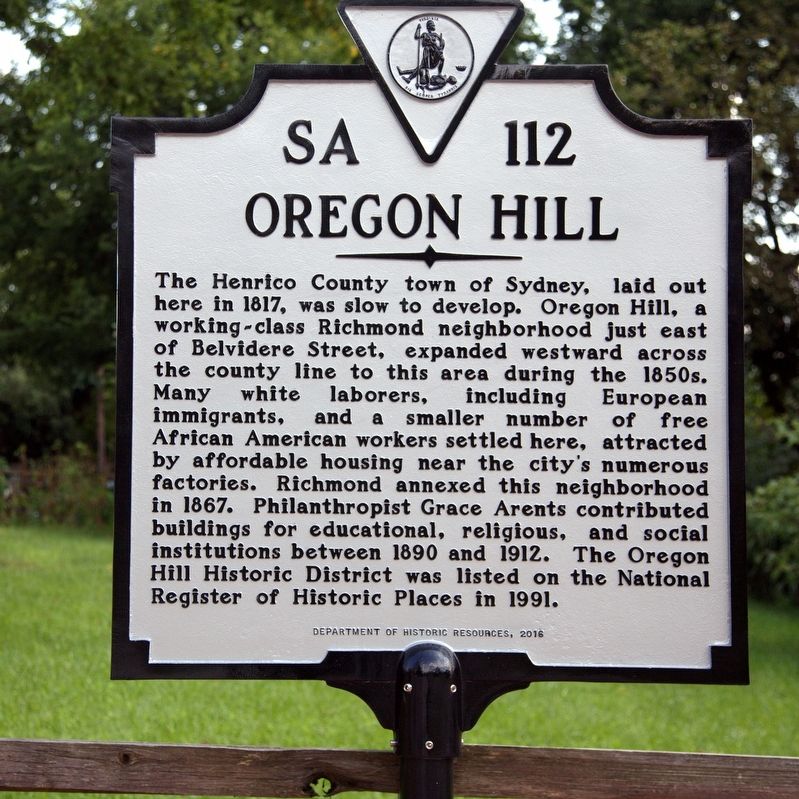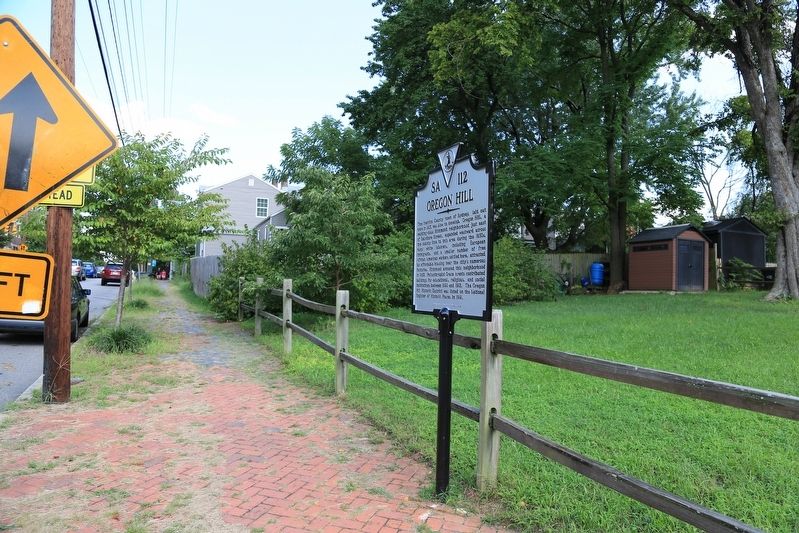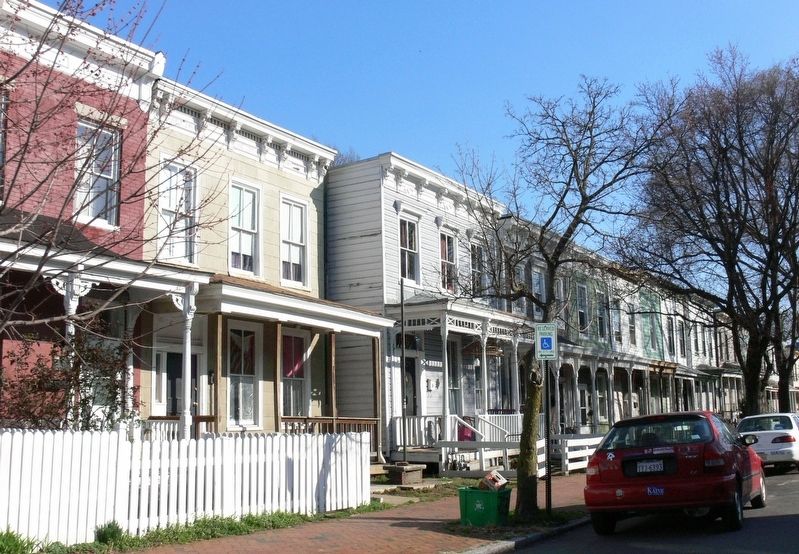Oregon Hill in Richmond, Virginia — The American South (Mid-Atlantic)
Oregon Hill
Erected 2016 by Department of Historic Resources. (Marker Number SA-112.)
Topics and series. This historical marker is listed in these topic lists: Industry & Commerce • Political Subdivisions. In addition, it is included in the Virginia Department of Historic Resources (DHR) series list. A significant historical year for this entry is 1850.
Location. 37° 32.506′ N, 77° 27.211′ W. Marker is in Richmond, Virginia. It is in Oregon Hill. Marker is on Idlewood Avenue west of South Cherry Street, on the right when traveling east. Touch for map. Marker is at or near this postal address: 911 Idlewood Ave, Richmond VA 23220, United States of America. Touch for directions.
Other nearby markers. At least 8 other markers are within walking distance of this marker. Grace Evelyn Arents (within shouting distance of this marker); Confederate Memorial Pyramid (about 700 feet away, measured in a direct line); Jacob House (approx. ¼ mile away); Samuel Pleasants Parsons House (approx. 0.3 miles away); Virginia State Penitentiary (approx. 0.3 miles away); Monroe Park (approx. 0.3 miles away); a different marker also named Monroe Park (approx. 0.4 miles away); Cathedral of the Sacred Heart (approx. 0.4 miles away). Touch for a list and map of all markers in Richmond.
Also see . . .
1. Wikipedia Entry. “Oregon Hill is a historic working-class neighborhood in Richmond, Virginia. Oregon Hill overlooks the James River and Belle Isle, and provides access to Hollywood Cemetery. Due to the neighborhoods proximity to the Monroe Park Campus of Virginia Commonwealth University, the neighborhood is sometimes referred to as a student quarter because of its high college student population. William Byrd III established a rural estate on the property in 1758. Wealthy heiress Grace Arents helped build many institutions to serve the community” (Submitted on September 10, 2017.)
2. 1991 National Register of Historic Places Nomination Form. Statement of Significance. In the first half of the nineteenth century in the vicinity of Tredegar Iron Works, Oregon Hill began to develop as a working-class neighborhood. During the second half of the nineteenth century, the Oregon Hill neighborhood and its residents played an active part in the reestablishment of Richmond’s position as a southern industrial and commercial center after the destructive and divisive years of the American Civil War. As home not to the wealthy but the working class of Richmond, Oregon Hill is intimately connected with the revival of the city’s economic, commercial, and manufacturing health.
The development of the neighborhood on the west side of Belvidere Street, from the 1818 construction of the Parsons House to the early twentieth century, provided residents with a place to live that was both affordable and within easy walking distance of the main manufacturing and commercial areas of the city. The early settlement of the neighborhood is also a part of the chronicle of the westward expansion of the city’s residential areas.
With very cohesive unified streetscapes that authentically echo its period of significance, Oregon Hill presents an unusual survival of a vernacular architecture and way of life of a social class not often the subject of historic preservation efforts. Examples of Federal, Greek Revival,
Victorian Italianate, Second Empire, Victorian Gothic, Queen Anne, Colonial
Revival, and Spanish Colonial Revival architectural styles can also be found in Oregon
Hill.
A significant figure in the history of Oregon Hill was Grace Evelyn Arents, niece of Lewis Ginter and heiress to his tobacco fortune. She was financially and personally involved in providing educational, social, and religious institutions and programs that served the working-class residents of Oregon Hill. Many of the significant landmarks in the neighborhood such as Saint Andrew’s Episcopal Church and School, the Arents Free Library, the Instructive Visiting Nurse Association Building, the Grace Arents Public Housing and the Grace Arents School are the direct result of her beneficence. (Submitted on September 10, 2017.)
Credits. This page was last revised on February 1, 2023. It was originally submitted on September 10, 2017, by J. J. Prats of Powell, Ohio. This page has been viewed 715 times since then and 60 times this year. Photos: 1, 2, 3. submitted on September 10, 2017, by J. J. Prats of Powell, Ohio.
Editor’s want-list for this marker. Photos of the neighborhood • Can you help?


